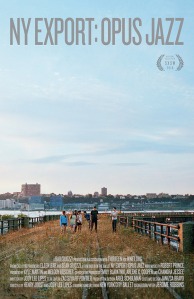I’m all for art taking different forms. Art doesn’t necessarily always have to contain deeper meanings. In the case of NY Export: Opus Jazz, having the intentions of emulating a classier time of musical cinema in a modern world is perfectly fine.
However, when the featured silenced dancers show this much talent and capability as they do in NY Export: Opus Jazz, it’s hard not to expect something more than “just dancing” – which is why it’s disheartening to report that I felt no emotions while watching the movie. The choreography and how its been shot and edited is commendable, but on the whole, the film is about as wooden as that clunky title.
Before the catfishing and paranormal hauntings, filmmaker Henry Joost (along with co-director/screenwriter Jody Lee Lipes) devised this 45 minute film bringing Jerome Robbins’ Ballet in Sneakers, Robert Prince’s original jazzy score, and professional dancers from New York City Ballet to nooks and crannies all around the Big Apple.
Locations play a supporting character in Joost and Lipes’ film. They manage to take an average setting – like a gymnasium or a courtyard – and turn it into an extravagant stage. The settings may not play significant symbolic roles in the routines, but the ability to make these environments into performance spaces is lovely.
Jerome Robbins had vast experience choreographing and directing musicals such as the kind NY Export: Opus Jazz wants to embody – notably Academy Award winner West Side Story.
A lot of that same quick, stylized cinematography is displayed here as the camera captures the movement. The film has easily taken on the look these classics effortlessly wore. Mission accomplished!
The film also has a good ear for city sounds. During a perceptive first few scenes, we breathe in urban city life. It’s noisy, but we can make out the music these isolated sounds make. When the instrumental accompaniment takes over, matters snap into being lighter and whimsical.
While you watch NY Export: Opus Jazz, though, you can’t help but wonder about the importance behind a film like this is, other than capturing a certain type of dashing essence. Movie goers spend a long time waiting for an overall point to be revealed.
When it’s figured out that the film is merely here to imitate refined musicals, the film becomes a bit of a bore as it hesitates to reach for any other goals.
It’s an ambitious and unique piece, but the lack of of a story covering the film or these individual numbers makes it that much harder for an audience member to follow it. Transitions between each dance are faint and reactions don’t seem natural enough to convince anyone in the audience that we’re watching characters instead of trained dancers.
Maybe this is why dance is so much more entertaining and engaging when its performed in real time on a large stage. With a movie, the filmmakers are able to calculate. Each shot has the very best view of each leap and twirl, but it still feels false. On stage, the routines unfold more organically and allow viewers to embrace the ecstasy and riskiness of each move.
Although NY Export: Opus Jazz is technically very well made, but it feels as dull as dishwater. That’s the last thing I want to be feeling as I watch two affectionate and attractive dancers entwine in front of a sunset. Dance enthusiasts may eat this up – no questions asked – but, don’t feel left out if you catch yourself yawning.




Leave a comment